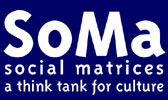DIMENSIONS
OF INFORMATION:
Location-Specific Information and Public Authoring in the Museum
Giles
Lane, Proboscis & London School of Economics, UK
Rachel Murphy, Rudegirl Designs, UK
Abstract
In recent years museums have begun to experiment with systems that deliver information to visitors specific to their location in the museum, such as Personal Digital Assistants (PDAs), preloaded with content, that use location sensing to call up information relevant to what the visitor is looking at. Location sensing may be determined automatically via in built sensors, such as Radio Frequency Identification (RFID) and Bluetooth beacons located near the objects, or via direct user input, such as indicating their location on a virtual map.
However, these systems are rarely more than electronic guide-books, or enhanced audio tours and follow the assumption that visitors belong to a “general public” without specific or expert knowledge - a view that harks back to the early days of museums established in the nineteenth century. In the twenty-first century however, the 'general public' is far more highly educated, and individuals have opinions and expert knowledge of their own that guide and shape their experiences of museum collections and do not necessarily follow official narratives and interpretations.
Urban Tapestries is a framework being developed by Proboscis that enables its users to access and author location-specific information using emerging wireless and mobile networks. As a framework for engaging the knowledge brought to museums and galleries by their visitors it offers new opportunities for creating parallel interpretations alongside official ones. It offers new ways in which visitors might engage in (anonymous) dialogues with each other over time and space which could enhance their visit, as well as contribute new forms of knowledge to the institution.

